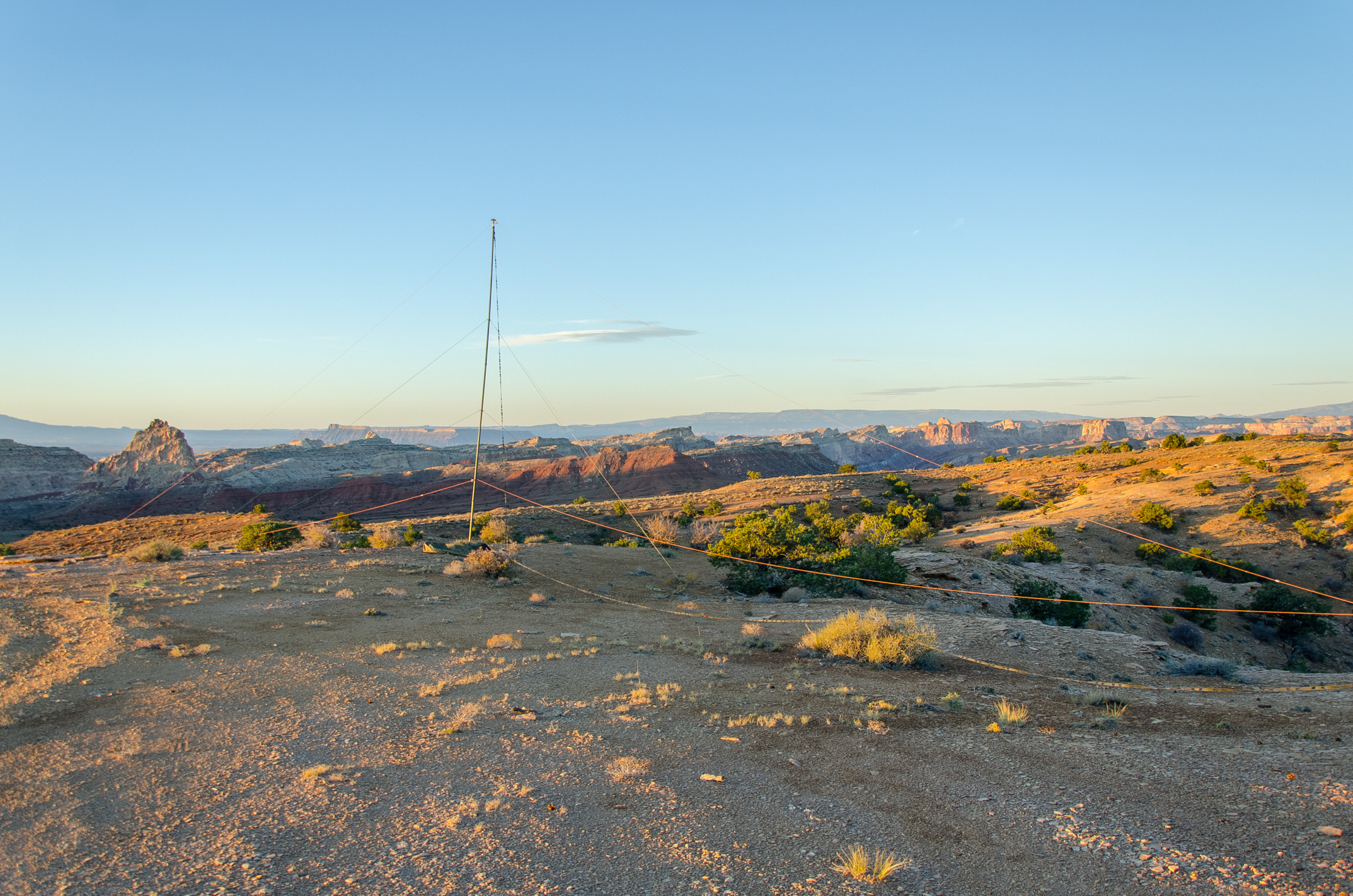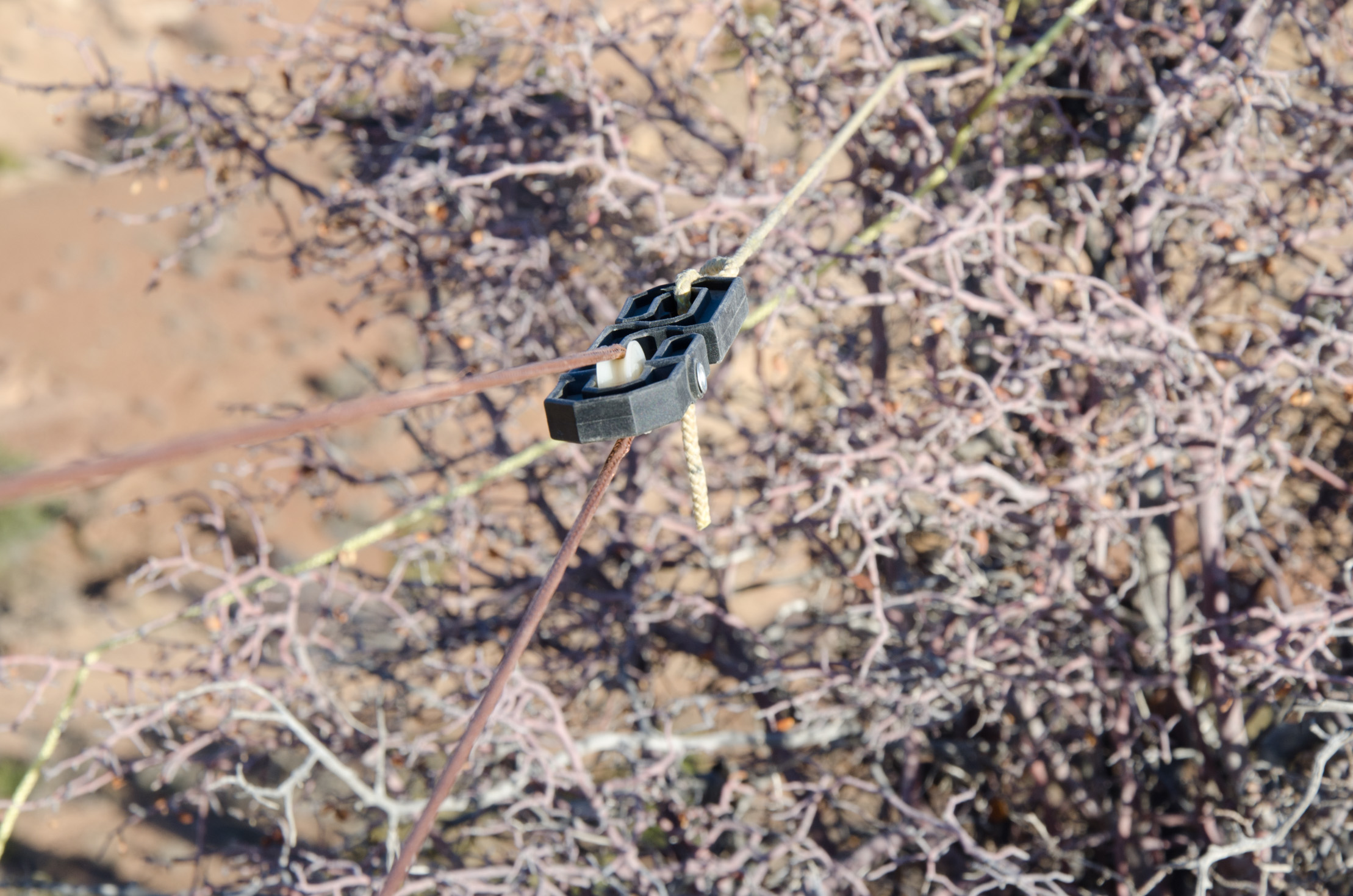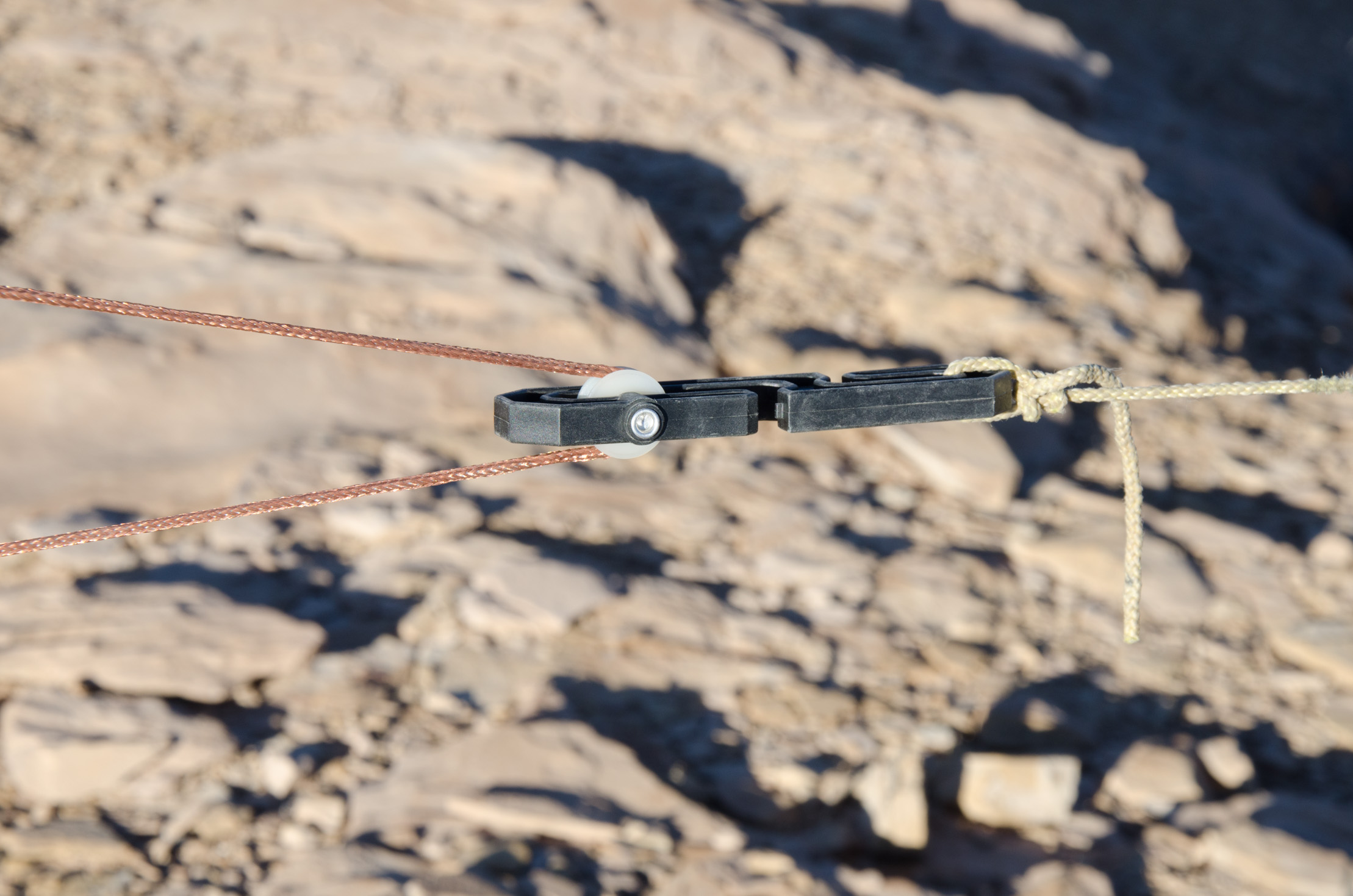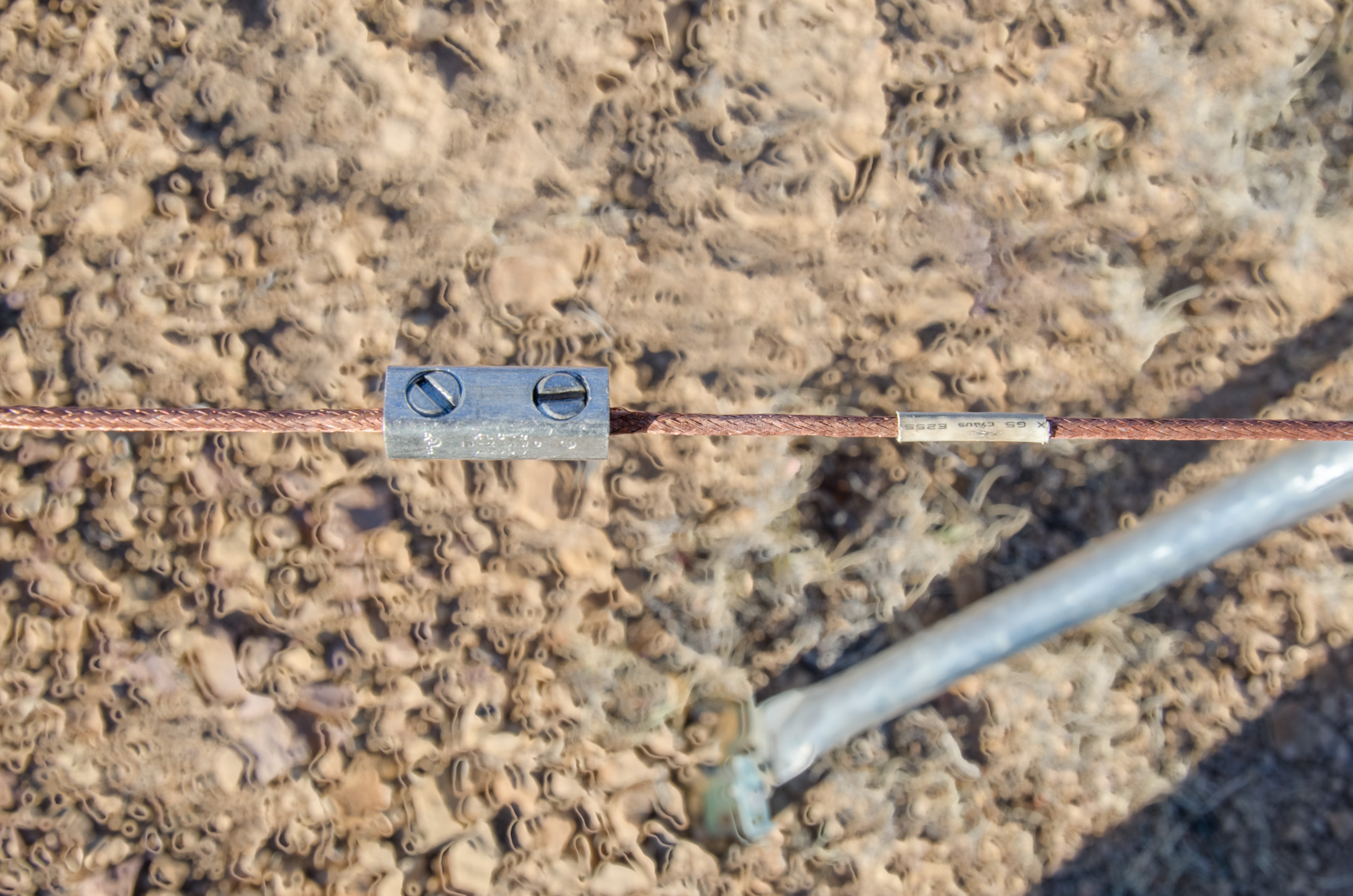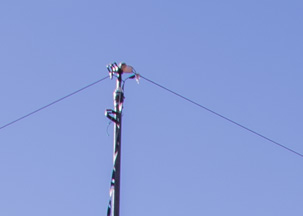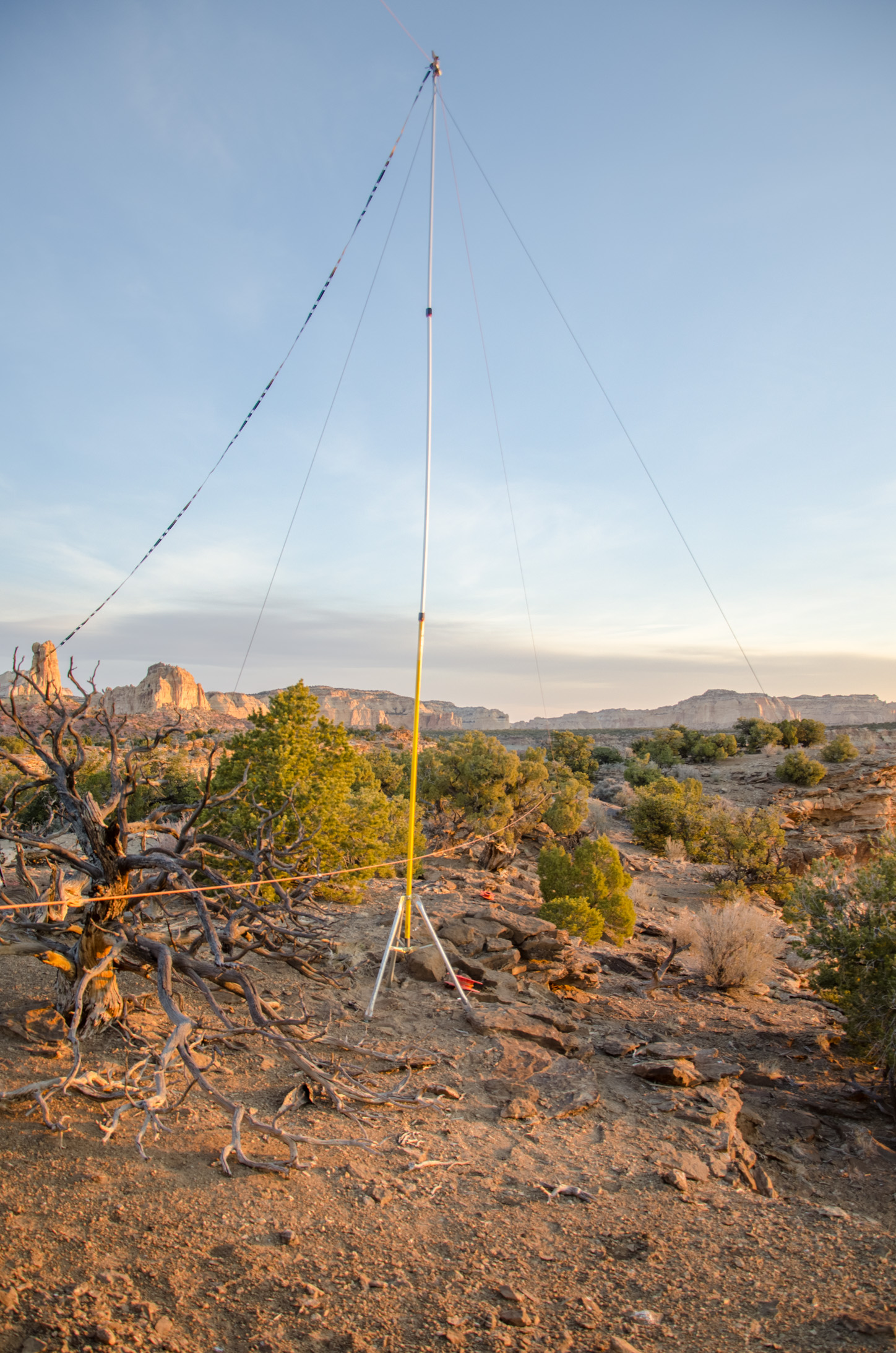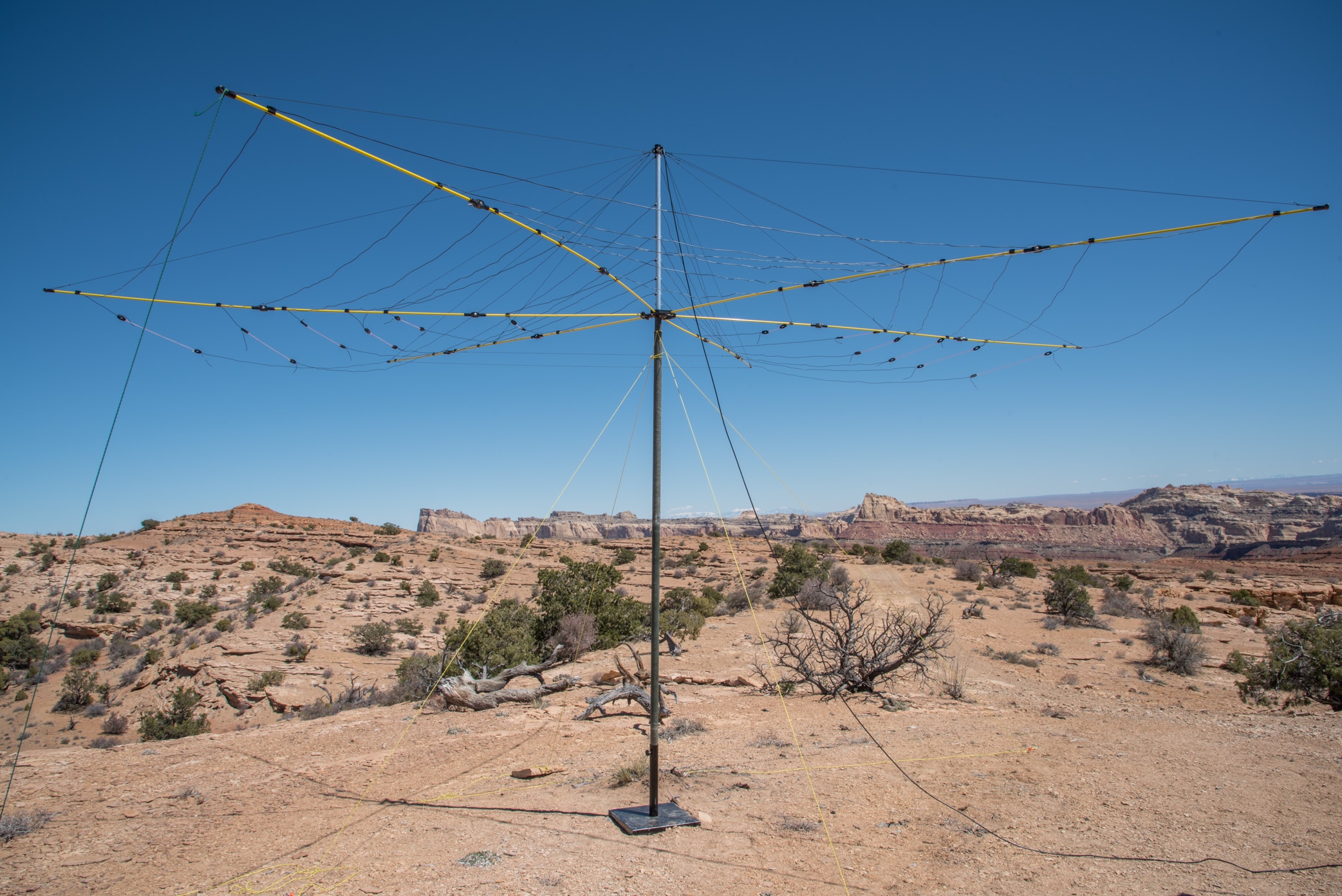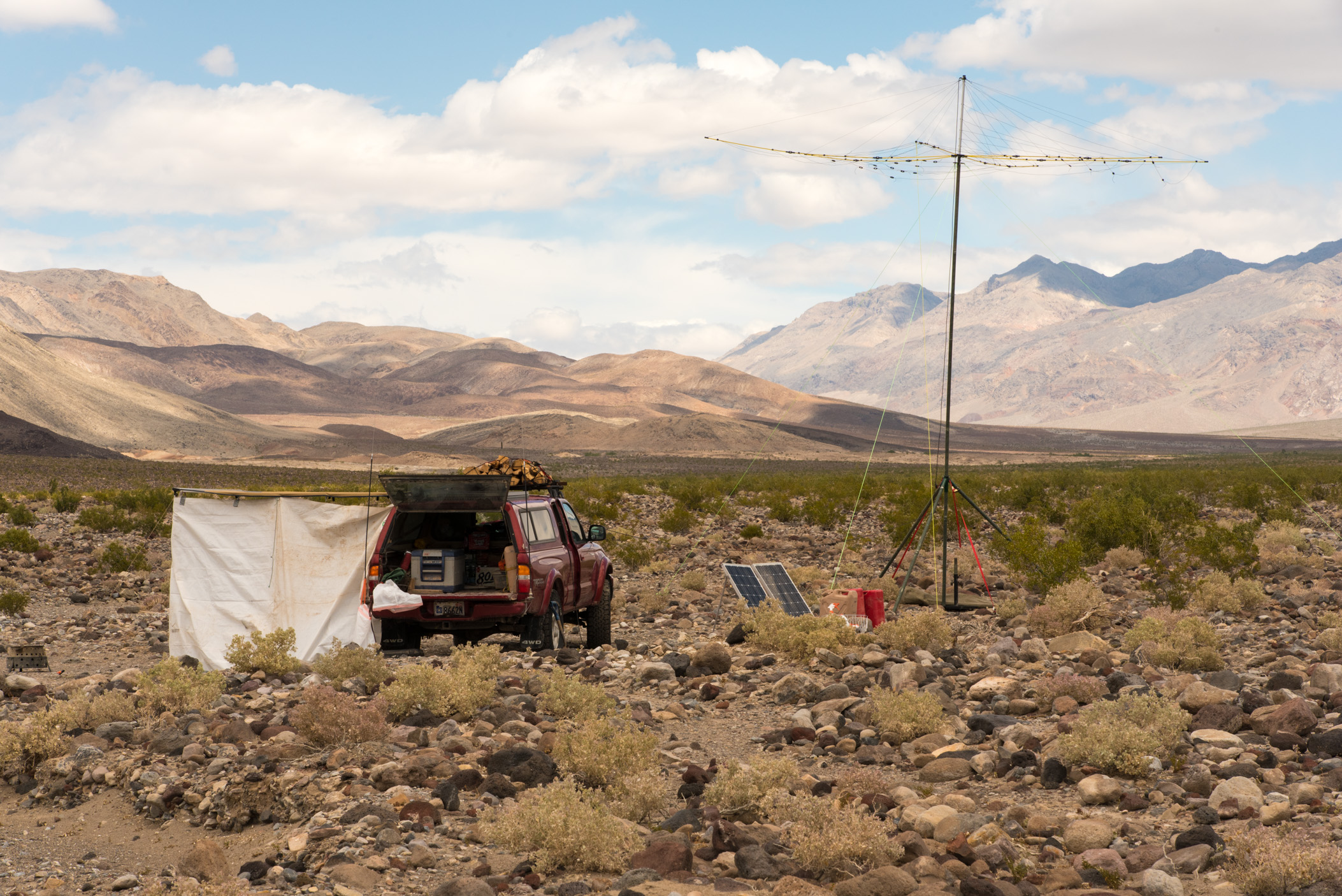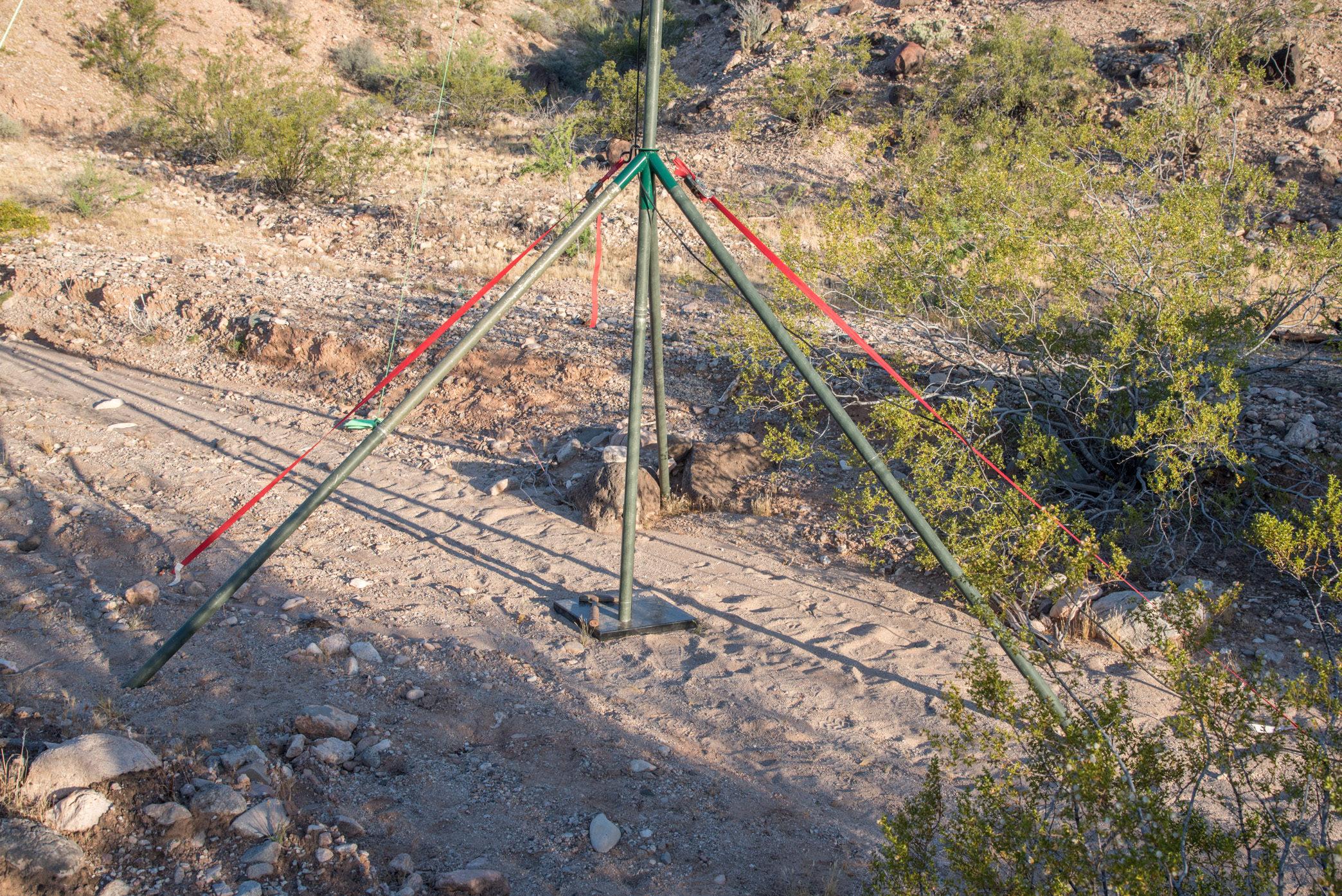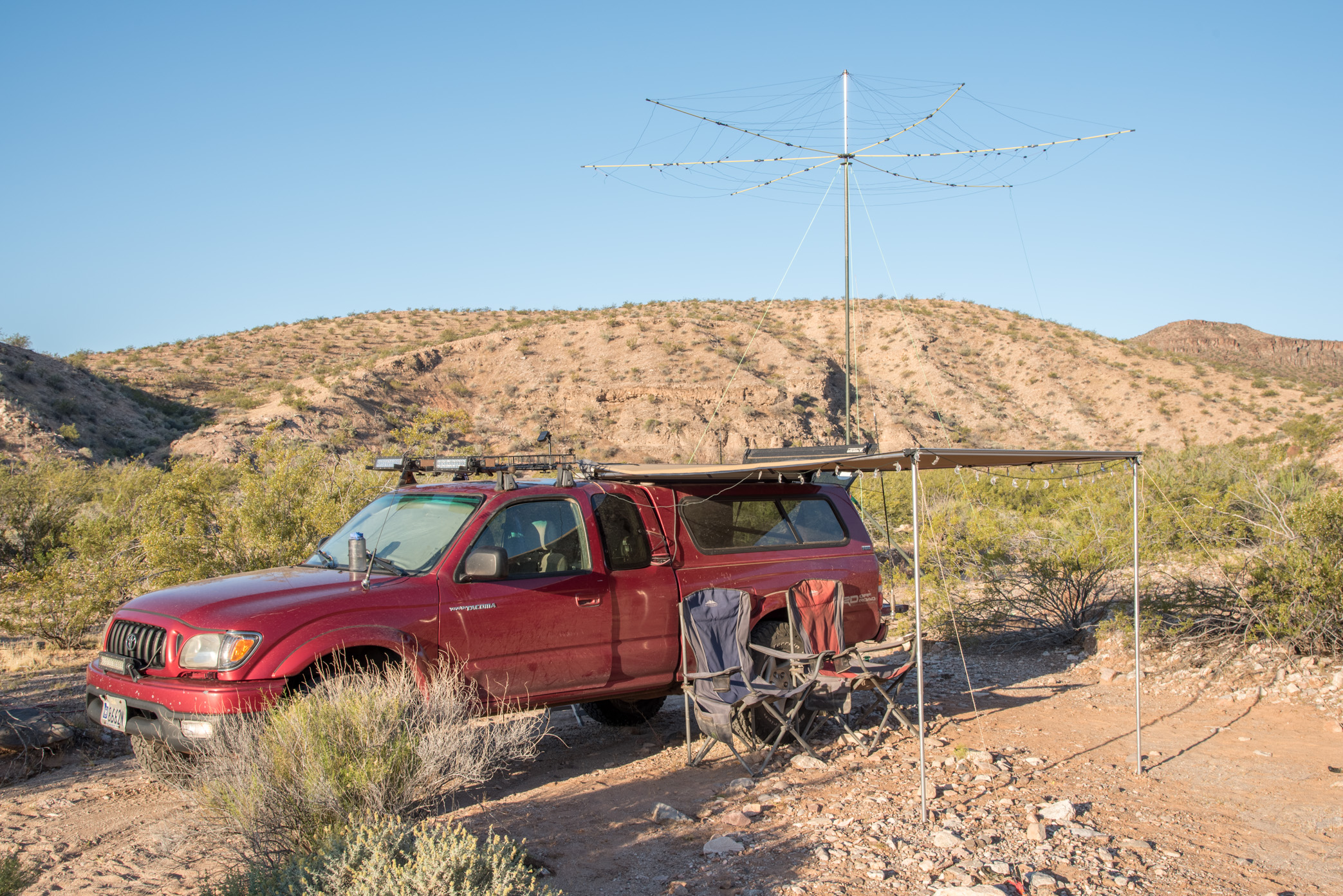The Reconfigurable Wire Antenna
My mainstay antenna for remote operations consists of a military mast based system, with a wire antenna that is reconfigurable in several different ways. My primary configuration, as seen above, is an 80m vertical delta loop fed with balanced line. That said, I have developed it such that I can also use the same equipment to make a 160m dipole, 80m dipole, or 40m dipole with just a few twists of the screwdriver. We can see how I did this below.
Let's first explore the 80m delta loop, as I believe that is the most versatile for remote operations as I can operate on everything from 10-80m with a simple hit of the tuner button.
I use a traditional delta loop configuration, but have found that putting it up in the field can be a bit tricky. To help with this, I discovered that if I use these simple clothes line pulleys (available at Home Depot), it allows me to adjust the whole loop by simply pulling on one end of the wire....
In this way, I can straighten up the pole in the direction the wire runs after the fact. This greatly simplifies the whole process and allows me to fine tune it. Further, when it comes time to lower the mast, I can simply 'crank it down' by pulling on the wire slowly and it is supported from the top allowing a controlled descent.
So how do I reconfigure the antenna into so many different forms, well I found these wire connectors, also in Home Depot, that are made to connect two disjoint wires together. I simply insert these inline at the appropriate breaks for the kind of antenna I want, and leave them in place tightened. If I then want a shorter antenna type, let's say a 40m dipole, I simply unscrew the connector at that point, and I have the dipole. Or I run out the full length of the wire, and connect the two ends to make the loop. Quick, easy, and very little to break.
The top of the antenna consists of a pvc T connector. The braid covering the rope wire is pulled back from the kevlar rope underneath, and tied to holes drilled in the pvc connector. I then use screw in wire joiners (also from Home Depot) that attach the bared balanced line directly to the outside of the braid. This acts as the connection to the antenna. I use anderson power poles to attach the main chunk of ladder line to the short length on the antenna, and back up this connection with a short piece of tied cord. It can get quite windy here in Utah out in the desert. This then runs to the switchable balun.
Here is a great picture of it fully deployed taken from my phantom 3 quadcopter:
Lesson learned:
I used to use a push up painters pole, also from Home Depot. What I found is it basically worked, but was much larger to carry than the broken down military mast poles. On top of that, it flexed quite a bit and was not at all flexible on the heights. The military mast allows me to adjust the height from really short to really tall and add support lines at different spaced heights. That is why I have retired the painters pole.
